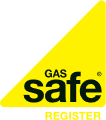Carbon monoxide poisoning
Table of contents
- Symptoms of carbon monoxide (CO) poisoning
- What to do if you suspect carbon monoxide (CO)?
- What is carbon monoxide (CO)?
- How does carbon monoxide (CO) poisoning happen?
- What are the signs of a carbon monoxide (CO) leak?
- How can I prevent carbon monoxide (CO) poisoning in my home?
- Find a Gas Safe registered engineer to inspect your gas appliance
- Been affected?
- Related Help Topics
Symptoms of carbon monoxide (CO) poisoning
Carbon monoxide can be deadly or cause serious long-term health problems. It is especially dangerous because you can’t see, taste or smell CO, and some symptoms of CO poisoning are the same as flu, food poisoning, viral infections, fatigue, or a hangover which makes it easy to mistake this very dangerous poisoning for something else.
The six main symptoms of poisoning are:
- Headaches
- Dizziness
- Nausea
- Breathlessness
- Collapse
- Loss of consciousness
Being aware of these symptoms could save your life.
There may be other signs that could indicate CO poisoning, such as:
- Symptoms you notice at home lessen when you leave.
- Others in your household experience similar symptoms at a similar time.
- Pets are displaying irritable behaviour. For example, odd behaviour such as aggression, anxiety or fear of noises or other animals/ children or vomiting.
What to do if you suspect carbon monoxide (CO) poisoning?
It’s important to act quickly:
- turn off the gas appliance (if it’s safe to do so)
- open doors and windows to let air in
- leave the property and go outside into fresh air.
Get medical advice as soon as possible.
- Contact the NHS 111 service if you suspect CO poisoning.
- If someone is experiencing severe symptoms, such as difficulty breathing, sudden confusion, or loss of consciousness, call 999 or go to A&E.
Contact the Gas Emergency Helpline on 0800 111 999 (GB) or the relevant service for your area.
You can also visit the NHS website for additional information on the symptoms of CO poisoning, what action to take and the treatment that’s usually provided.
What is carbon monoxide (CO)?
Carbon monoxide (CO) is a highly poisonous gas produced by the incomplete burning of any carbon fuel such as natural gas or liquefied petroleum gas (LPG). This can happen when a gas appliance has been incorrectly fitted, badly repaired, or poorly maintained. CO can also build up if flues, chimneys, or vents are blocked.
Solid fuels, such as coal, wood, petrol, as well as oil, can also produce carbon monoxide when they burn.
CO is known as the ‘silent killer’ because you cannot see, smell or taste it.
How does carbon monoxide (CO) poisoning happen?
When you breathe in carbon monoxide it replaces the oxygen in your blood. CO poisoning occurs when it builds up in your bloodstream and the lack of oxygen results in the body’s cells failing and dying. CO poisoning can happen very quickly and even small amounts of the gas can cause poisoning. Exposure to CO can result in paralysis, brain damage or even death.
What are the signs of a carbon monoxide (CO) leak?
Any of the following could be a sign of a carbon monoxide leak:
- Floppy yellow or orange flame on your gas hob or oven, rather than a crisp blue flame.
- Dark, sooty staining on or around gas appliances.
- Pilot lights that frequently blow out.
- Increased condensation inside windows.
How can I prevent carbon monoxide (CO) poisoning in my home?
The most important thing you can do to minimise the risk of CO poisoning is to ensure that your gas appliances are safety checked annually by a Gas Safe registered engineer.
Installing an accredited audible carbon monoxide alarm in your home is a good second line of defence, as they emit a sound when CO is detected. However, because a CO detector’s alarm only activates once there is CO present, you should never rely on them as your sole form of prevention.
Find a Gas Safe registered engineer to inspect your gas appliance.
To find engineers in your area Check The Register page on this site. If you require an engineer qualified to investigate the presence of CO, you can refine your search by following these steps:
- Enter your postcode.
- Under the ‘Select appliance type’ tab choose ‘Fumes Investigation’.
- Click ‘Find’ to see the updated results.
Remember, scheduling regular safety checks and servicing for your gas appliances by a qualified gas engineer keeps you and your family gas safe.
Been affected?
If you have been affected by CO and would like to share your story, please get in touch with us by email.
The Gas Safe Charity have created a short film explaining the sources, signs and symptoms of carbon monoxide poisoning using British Sign Language. You can view the short film at the YouTube URL below:
https://www.youtube.com/watch?v=FgKxkC80ifM
Carbon monoxide (CO) and gas boilers
To find out more information about CO poisoning and the risk an unsafe gas boiler may pose visit our Boiler Guide.
Related Help Topics
Related Help Topics
Featured Content
Gas Safety In The Home
Find the latest advice and guidance on how to stay safe at home
New Gas Appliance Installation
If you’re having a new gas appliance installed, here’s some good guidance on the process you’ll go through.
What To Do in a Gas Emergency
Find out the steps you need to take in a gas emergency.


